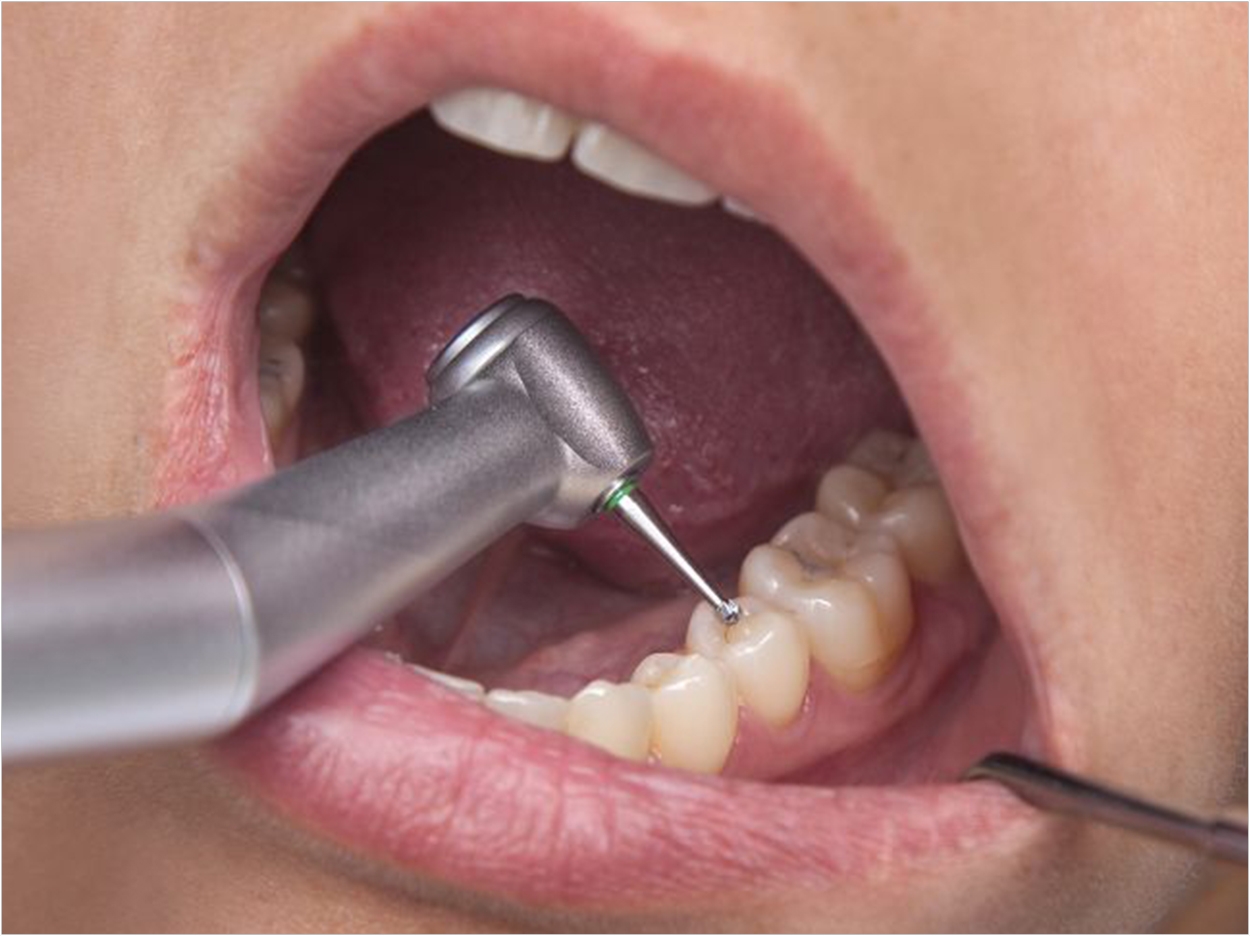
Despite personal protective equipment (PPE) use, potentially infectious splatter can reach clinicians’ faces, bodies, arms, legs, and elsewhere, according to researchers at the University of Toronto, University of Vancouver, and private practice.
A dental mannequin was fitted with a set of model teeth coated in Glo Germ, which appears blue under ultraviolet light. While wearing short-sleeved scrubs, goggles, a surgical mask, and gloves, a dentist and dental hygienist performed three different dental procedures on the mannequin using a high-speed handpiece, an ultrasonic scaler, and an air-water syringe, all with high-volume suction.
Also, a ventilator was equipped and programmed to release Glo Germ during the procedures to simulate a cough. A dentist anesthesiologist also was introduced wearing the same PPE as the dentist and hygienist as well as a face shield during the simulation.
After each procedure or cough, the participants went into a dark room where UV light was used to examine splatter patterns. Photographs also were taken and analyzed to document the extent of the splatter.
After each aerosol-generating procedure (AGP) was performed, both the dentist and hygienist had splatter on their face, body, arms, and legs. The simulated cough showed an increased amount of splatter produced and, in addition to their face, body, arms, and legs, the dentist and hygienist had splatter on the crown of their head, back, and shoes.
The anesthesiologist had a significant amount of splatter on every surface of the body, except for the back and shoes. Of particular note was the splatter found behind the face shield and underneath the chin of the anesthesiologist, illustrating how impactful a cough can be at releasing the SARS-CoV-2 virus, the researchers said.
In addition to eye protection, masks, and gloves, dental professionals should wear face shields, bouffant or surgical caps, and shoe coverings to fully protect themselves from the virus, the researchers concluded. This full set of PPE also should be changed between patients to prevent cross-contamination of patients or staff during AGPs.
The study, “Aerosol Generating Procedures and Simulated Cough in Dental Anesthesia,” was published by Anesthesia Progress.
Related Articles
Laser Reduces Spatter by 99.9%
Training Demonstrates How Improper PPE Use Leads to COVID-19 Exposure
CDC Infection Control Guidelines Catch Up With Need to Address Aerosols












